The birds of urban paradise: How to get twitching without leaving the city
You don't need to leave the concrete jungle to spot some rare and interesting birds. Here's a handy guide to birdspotting in Britain's towns and cities.
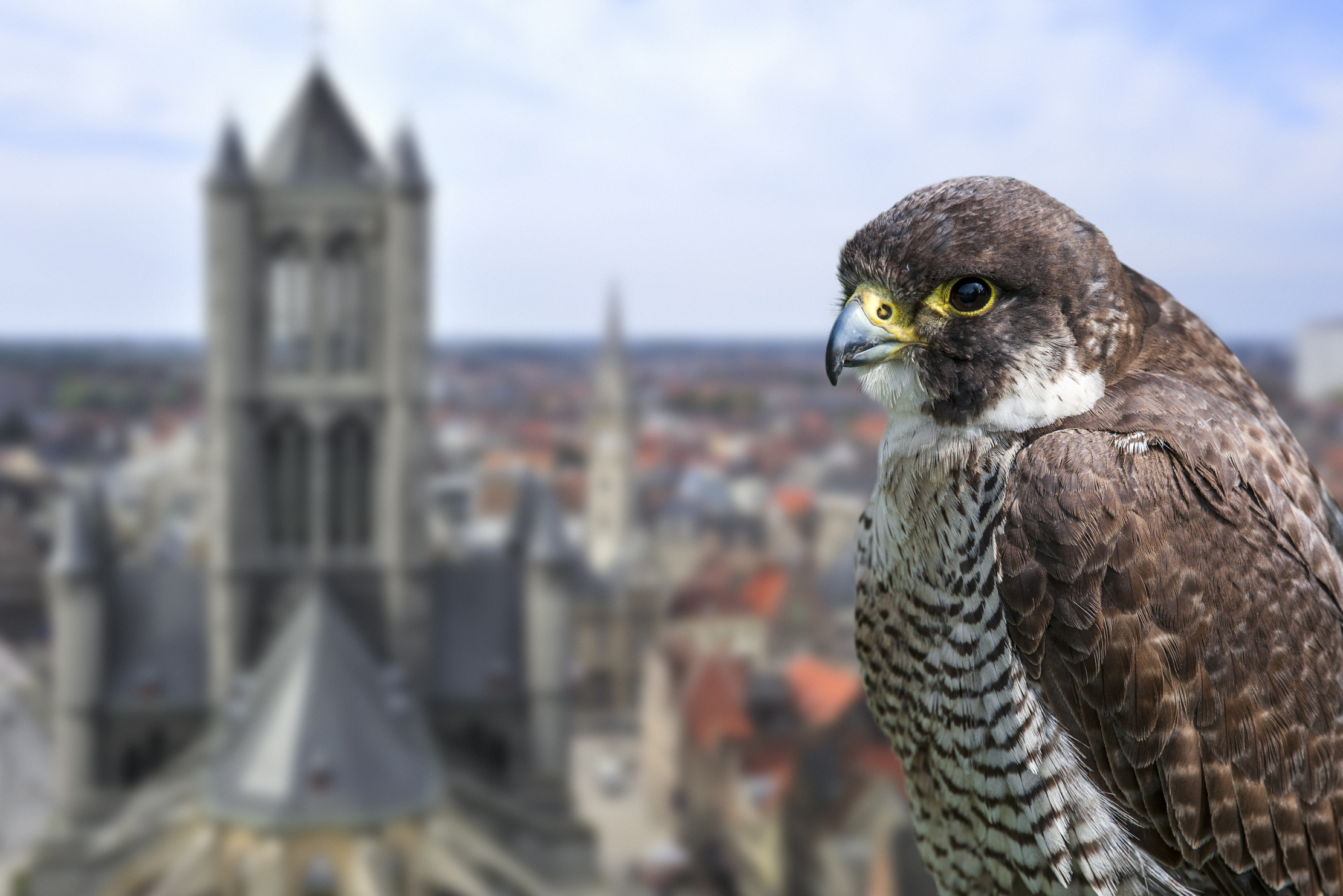

These are unlikely jungles: office blocks, housing estates, city squares. These are nobody’s idea of a wildlife paradise. But keep your eyes peeled — look carefully, look around you, and most importantly look up — and you’ll find that life can thrive here. Among the most successful city dwellers (and certainly among the most conspicuous) are birds. There’s more to urban birdwatching than feral pigeons.
Though it’s worth pointing out that pigeons have played a big part in shaping the avian landscapes of our towns. These were ‘rock doves’ once, before they were domesticated for racing and show, and then, as so often happens, found their way back to a different sort of wildness, as city birds.
There’s much to enjoy, I think, in the resilience and vitality of pigeons in their own right, but pigeons are also part of a bigger story. Take a look a little further up the food chain. An apex predator is hoving into view.
The rise and rise of the urban peregrine falcon is a remarkable story. This is, at its top speed, the fastest of all birds, and if it isn’t the most formidable killer on earth, it’s certainly the most formidable killer you’re likely to see zooming over the rooftops of The Ridings shopping centre in central Wakefield.
Wakefield — a post-industrial city in West Yorkshire — is where I grew up. Back then, in the 1980s, a peregrine here would have seemed a laughable idea, like a feral emu or an urban penguin. For one thing, the peregrine was a bird of wild places, rocky uplands, the far-flung wilderness; for another, it was, by then, a bird on the brink, pushed to the edge of extinction in the UK by persecution and the insecticide DDT.
You can now watch a rolling webcam of peregrines nesting on Wakefield Cathedral. In fact there’s barely a city in the UK today that doesn’t have at least one pair or two. These aren’t wilderness birds any more (the New York City borough of Manhattan is home to the densest peregrine population in the world). Much of this is down to pigeons, the peregrine’s staple meal. The pigeons are in the cities because of us, and the peregrines are here because of the pigeons.
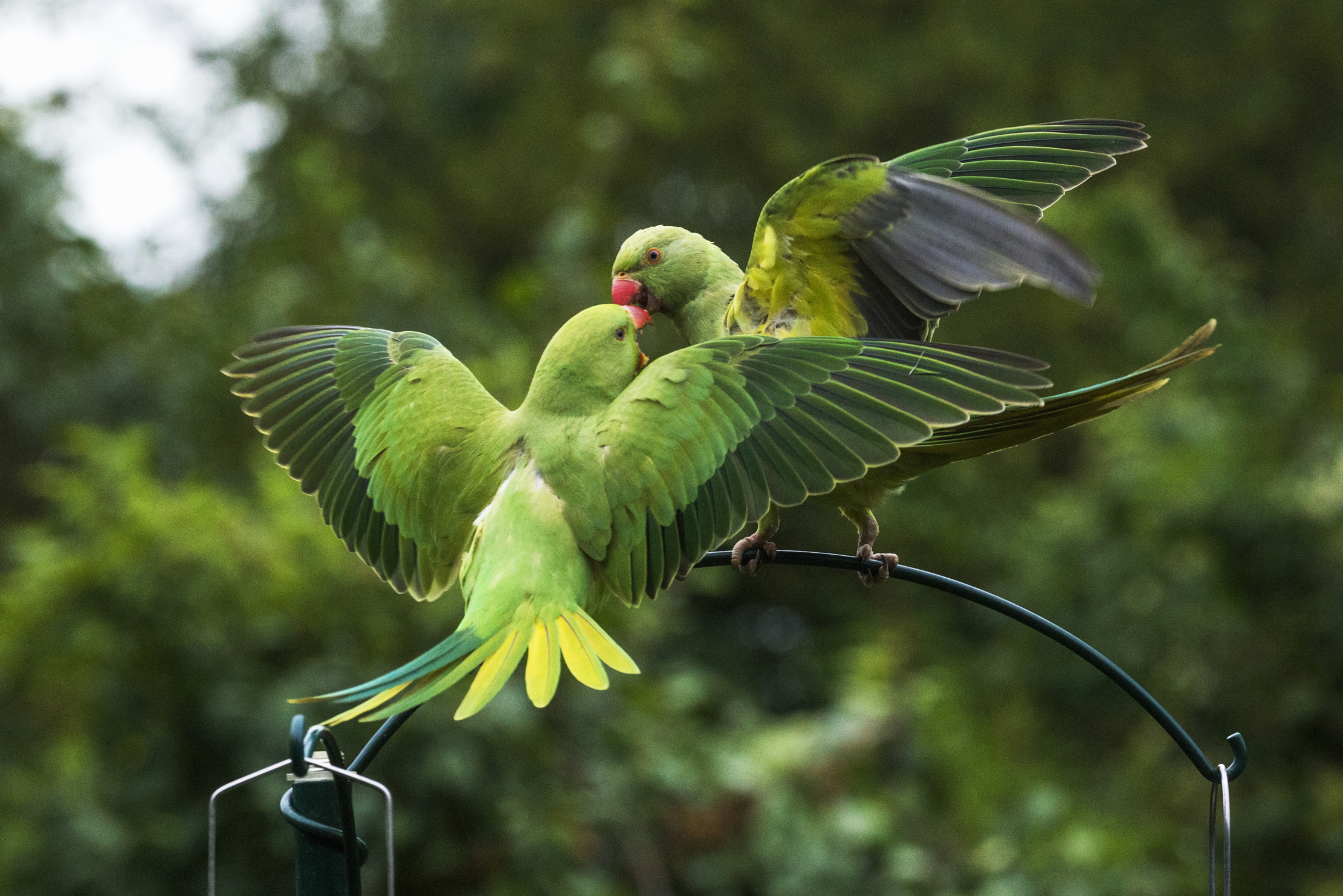
Rose-ringed parakeets have been thriving in London since the 20th century, although their exact origin and how long they've been living in the capital is not known.
Humans generally are a key factor in the development of city bird populations. Gulls, for example, which now rove freely (and hungrily) across the most landlocked urban landscapes, are mainly here for our waste food. City-roosting birds like starlings enjoy the extra warmth generated by our humming urban centres. These bird populations are really an accident, a by-product of stuff we were doing anyway.
Sign up for the Country Life Newsletter
Exquisite houses, the beauty of Nature, and how to get the most from your life, straight to your inbox.
Sometimes they are unwelcome — hence the plastic owls, anti-pigeon spikes and lethal netting we often see on city buildings. But in some places, locals actively welcome urban bird species. ‘Green’ roofs, planted with flowers, provide hunting grounds for insectivores; the installation of peregrine nestboxes is a profitable new micro-industry for steeplejacks.
Leafy city parks are of course rich in birdlife (in London’s Hyde Park, entrepreneurs flog bags of birdseed so that tourists can feed the parakeets — another notion that would have seemed crazy 30 years ago). But you don’t even need a park, or even a blade of grass, for birdlife to find a way.
For the hardcore urban birder, parks are cheating. Just keep your ears open for birdsong from the rooftops. Watch for signs: white streaks of bird poo, prey feathers scattered on a pavement, scrappy nests in old outflows, gutters, traffic light casings. And look up: there might be a starling murmuration, or a colony of jackdaws calling ‘jack, jack’, or a pied wagtail strutting along a ridgeline, or the burly silhouette of a peregrine, scattering the pigeons.
Everyday urban birds
Birds — like people — can be creatures of routine. They know what they need, and if they know where to get it then that’s where they’ll go. These are the regulars, the commuters, the 9-to-5 birds making a steady living in cities all across the UK.
Starling
Starling murmurations — the spectacular, enigmatic airshows put on by large starling flocks as they gather to roost — have become well-known, but the fun doesn’t stop when the birds come down to earth. When they settle down in their night-time quarters (the trees in a city square, say) they can’t be seen, but they’re still hard to miss: the deafening chatter at the heart of a starling roost has to be heard to be believed.
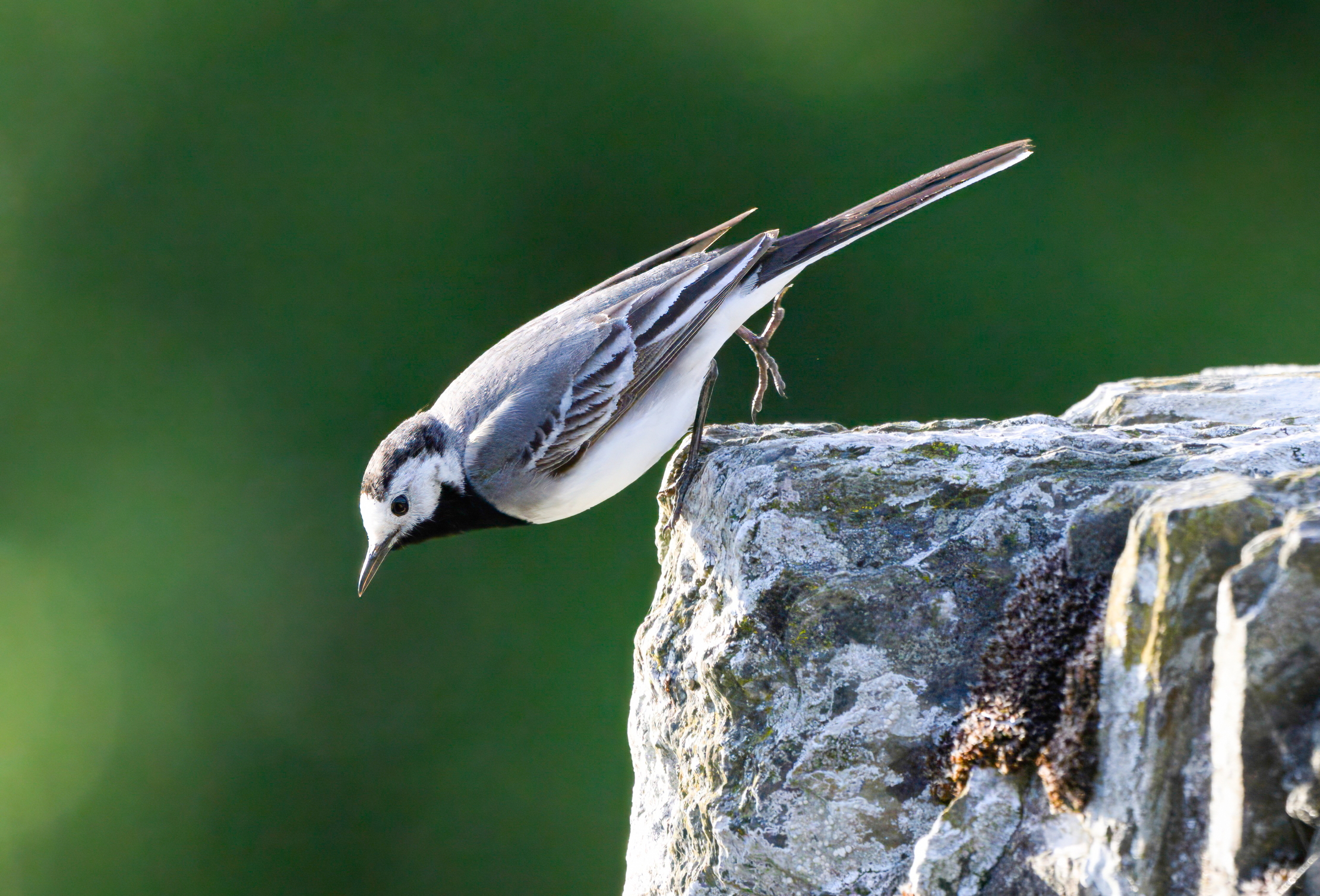
The pied wagtail or 'the Chipping Flyover' — a 'dapper little bird'.
Pied wagtail
Jovial Londoners sometimes call this bird ‘the Chipping Flyover’: ‘chip, chip’ it calls, as it zips by overhead. It's a dapper little bird, notable for its neat black-and-white plumage as much as for the long wagging tail that gives it its name. Its cousin the yellow wagtail hangs around near cattle, snatching the flies scared up by the cows’ clomping hooves; the pied wagtail prefers to loiter around the wheels of family saloons and 4x4s, as this is the quintessential car-park bird, often seen walking briskly around the marked bays, keeping a beady eye out for flies.
Gull
There are three species of gull that commonly frequent urban spaces: the black-headed gull (small, yawping, red-legged), the lesser black-back, and the big, bullying daddy of them all, the herring gull (a beautiful bird, if you put aside its forceful personality and focus on its silver-white livery, banana-yellow bill and eyecatching red bill-spot). Among birdwatchers, ‘gullers’ are a special breed — the only kind of birders you’re liable to see hunkered keenly beside a landfill site.
City specials
Some city birds are not generalists or opportunists; these birds have found a particular niche in the British cityscape.
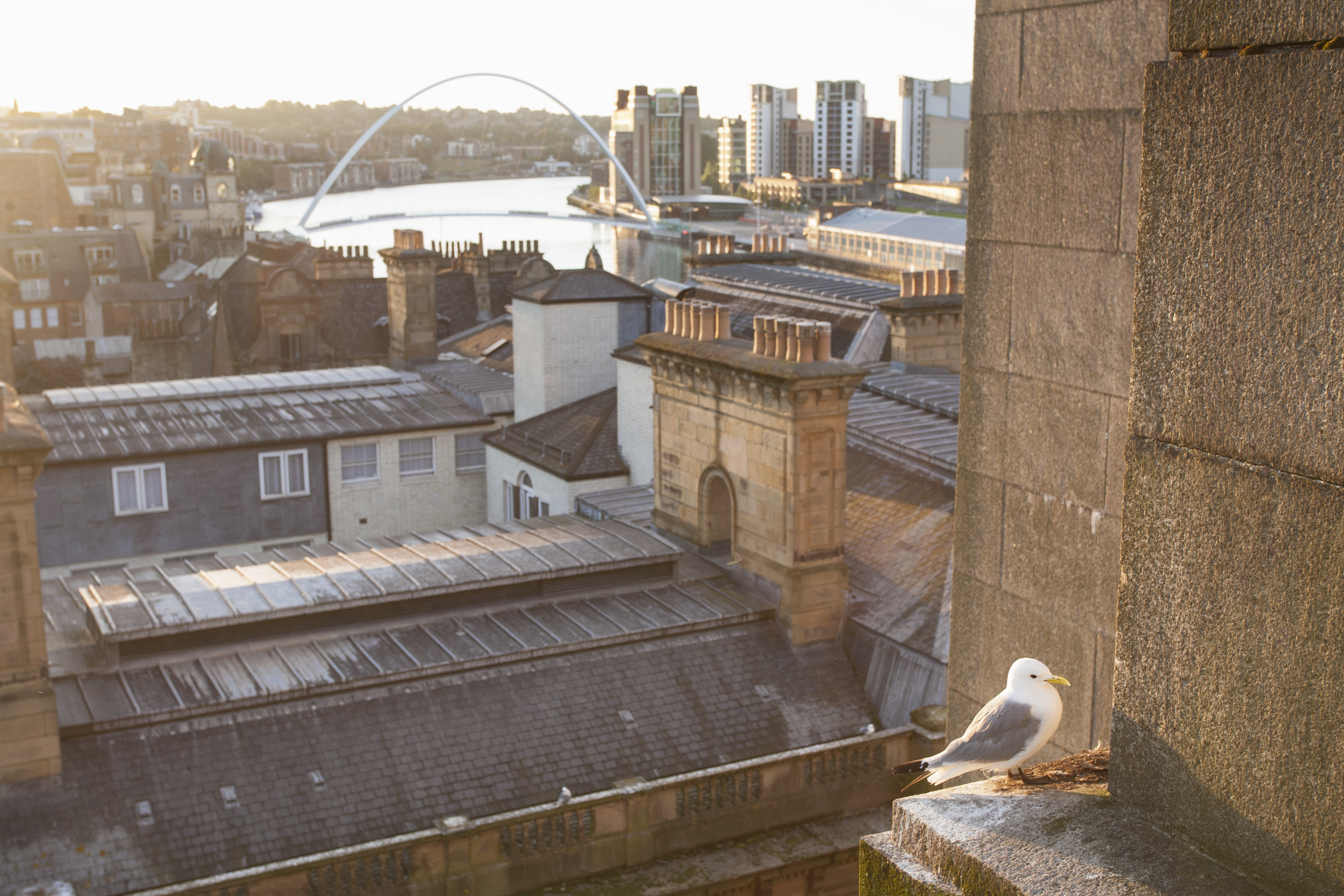
A kittiwake nesting on the ledge of a building in Newcastle-upon-Tyne.
Kittiwake
Newcastle-on-Tyne has a lot to be proud of: beside the football team, the industrial heritage and the Brown Ale, the city boasts the world’s most inland colony of kittiwakes. These small, handsome, noisy gulls, usually sea-cliff specialists, assemble in huge numbers each spring to nest on and around the iconic Tyne Bridge — several miles upriver from the North Sea.
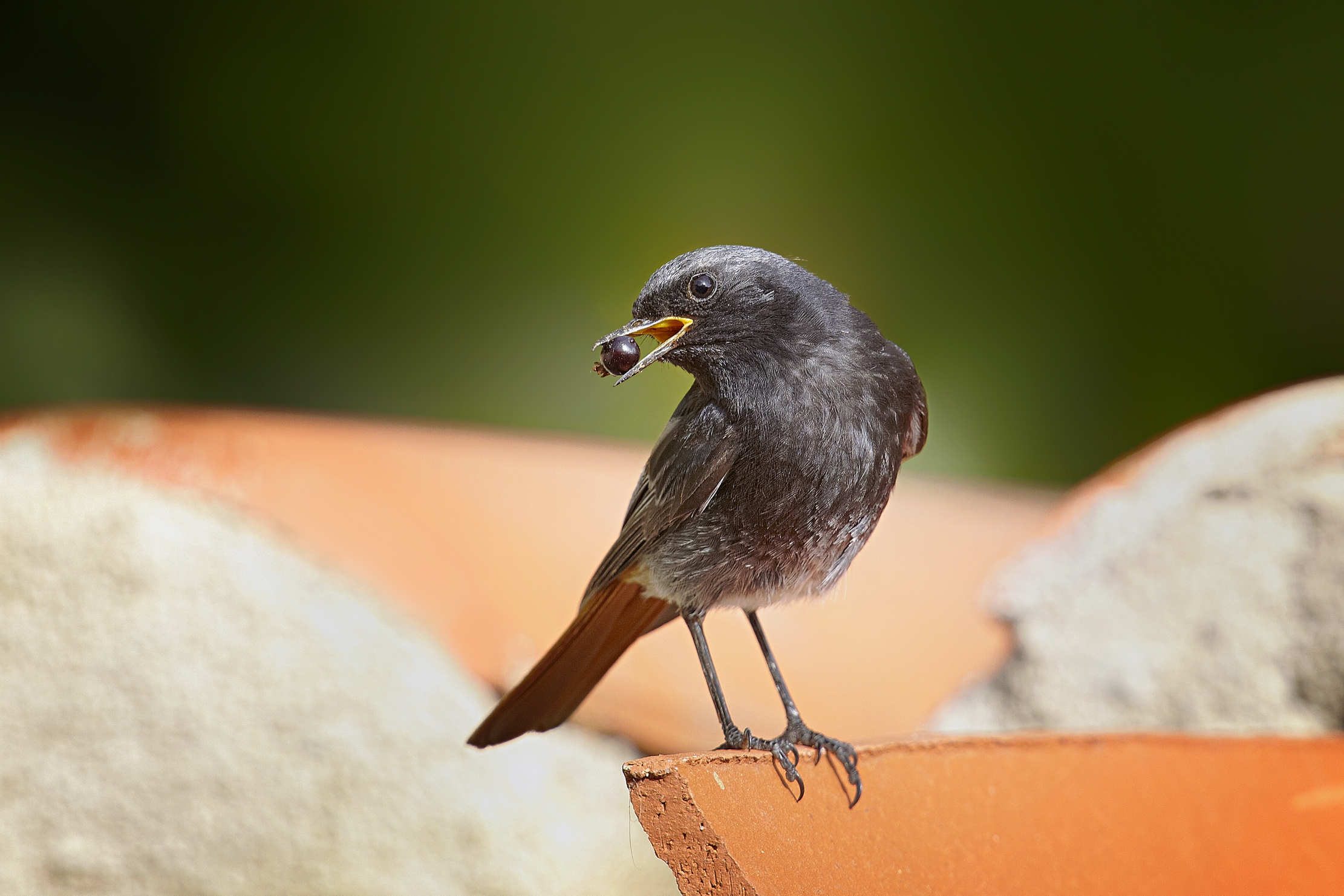
A black redstart
Black redstart
The black redstart is very rare in the UK, but it occupies a special place in the city ecosystem. Small, sooty, somewhat like a robin if a robin had a sideline as a chimney-sweep, the black arrives here in the spring, and more often than not makes a beeline for the urban jungles. It’s the only true songbird to breed in the City of London; it nests and sings on derelict power stations, old mills, tower blocks. Unlike a majority of city birds, it’s not a scavenger or an opportunist — all it wants is to nest somewhere high (an office block will do nicely) and hunt for bugs (which it can find in great numbers among the scrubby plants of abandoned spaces, vacant lots and industrial yards).
Goshawk
OK, so this hulking forest predator — a sort of murderous, souped up sparrowhawk, celebrated in books by Helen Macdonald and TH White among others — isn’t one you’re likely to see on a trip to the shops in Norwich, Salford or Reading, but, like the peregrine and the red kite, it has undergone an urban renaissance. The goshawk’s barred breast and flashing amber eye can now be seen in Berlin, Hamburg and other cities of central Europe
Richard Smyth is a writer and critic. His recent books include The Jay, The Beech And The Limpetshell (2023) and the novel The Woodcock (2021), and he writes regularly for publications including The Guardian, Aeon, New Scientist, Prospect and BBC Wildlife. He lives in Bradford, West Yorkshire.
-
 'Monolithic, multi-layered and quite, quite magnificent. This was love at first bite': Tom Parker Bowles on his lifelong love affair with lasagne
'Monolithic, multi-layered and quite, quite magnificent. This was love at first bite': Tom Parker Bowles on his lifelong love affair with lasagneAn upwardly mobile spaghetti Bolognese, lasagne al forno, with oozing béchamel and layered meaty magnificence, is a bona fide comfort classic, declares Tom Parker Bowles.
By Tom Parker Bowles
-
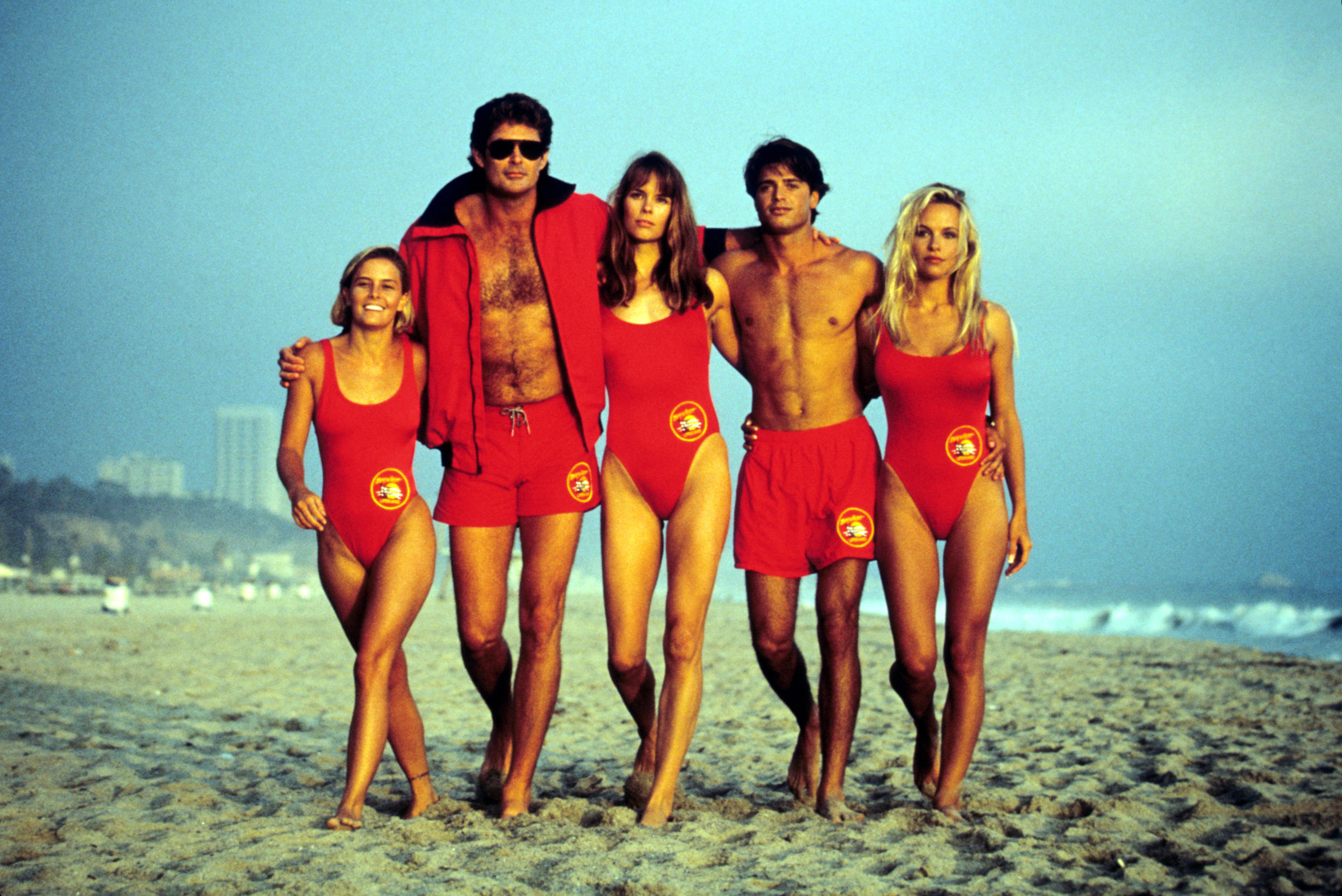 Country houses, cream teas and Baywatch: Country Life Quiz of the Day, April 24, 2025
Country houses, cream teas and Baywatch: Country Life Quiz of the Day, April 24, 2025Thursday's Quiz of the Day asks exactly how popular Baywatch became.
By Toby Keel
-
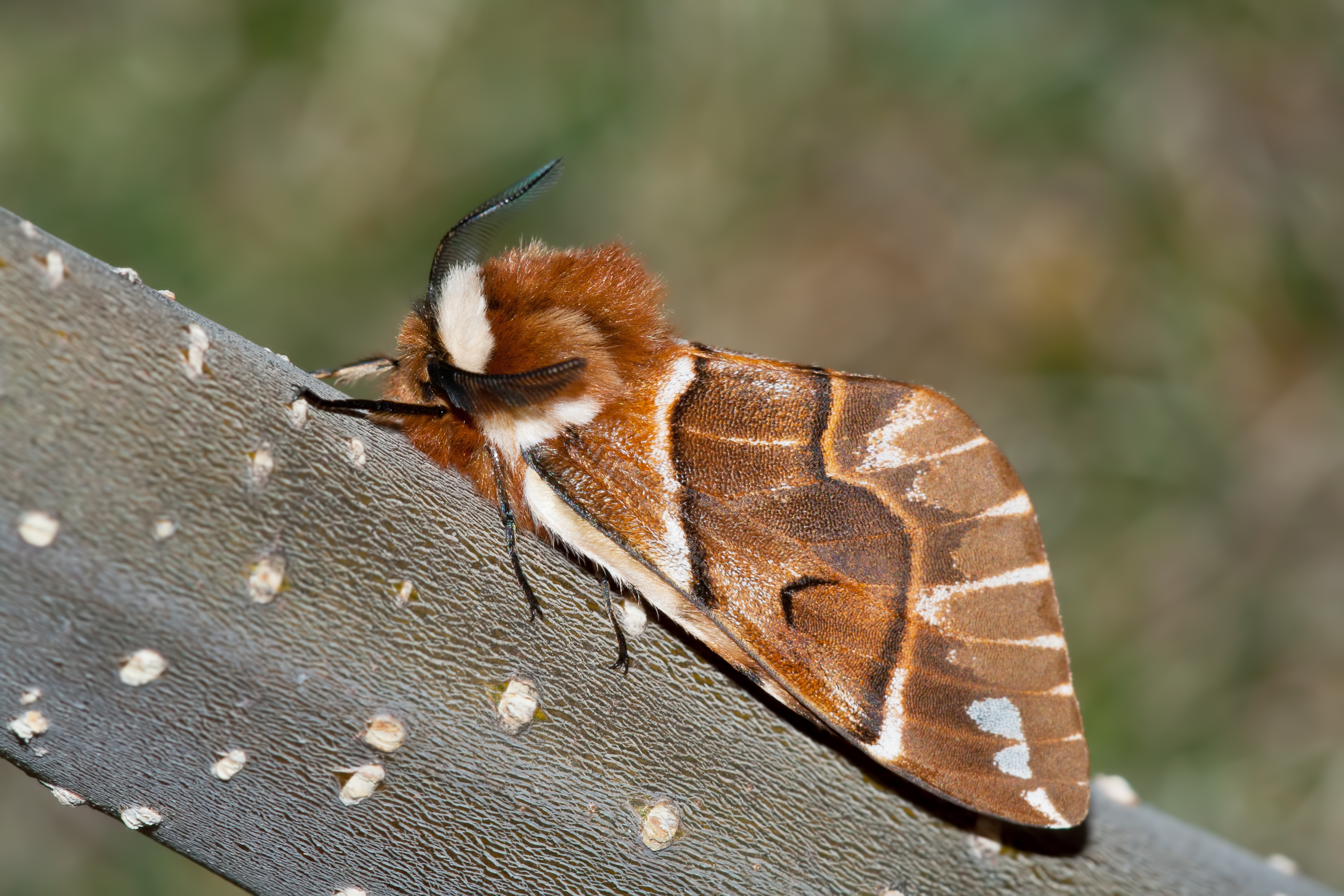 In all its glory: One of Britain’s most striking moth species could be making a comeback
In all its glory: One of Britain’s most striking moth species could be making a comebackThe Kentish glory moth has been absent from England and Wales for around 50 years.
By Jack Watkins
-
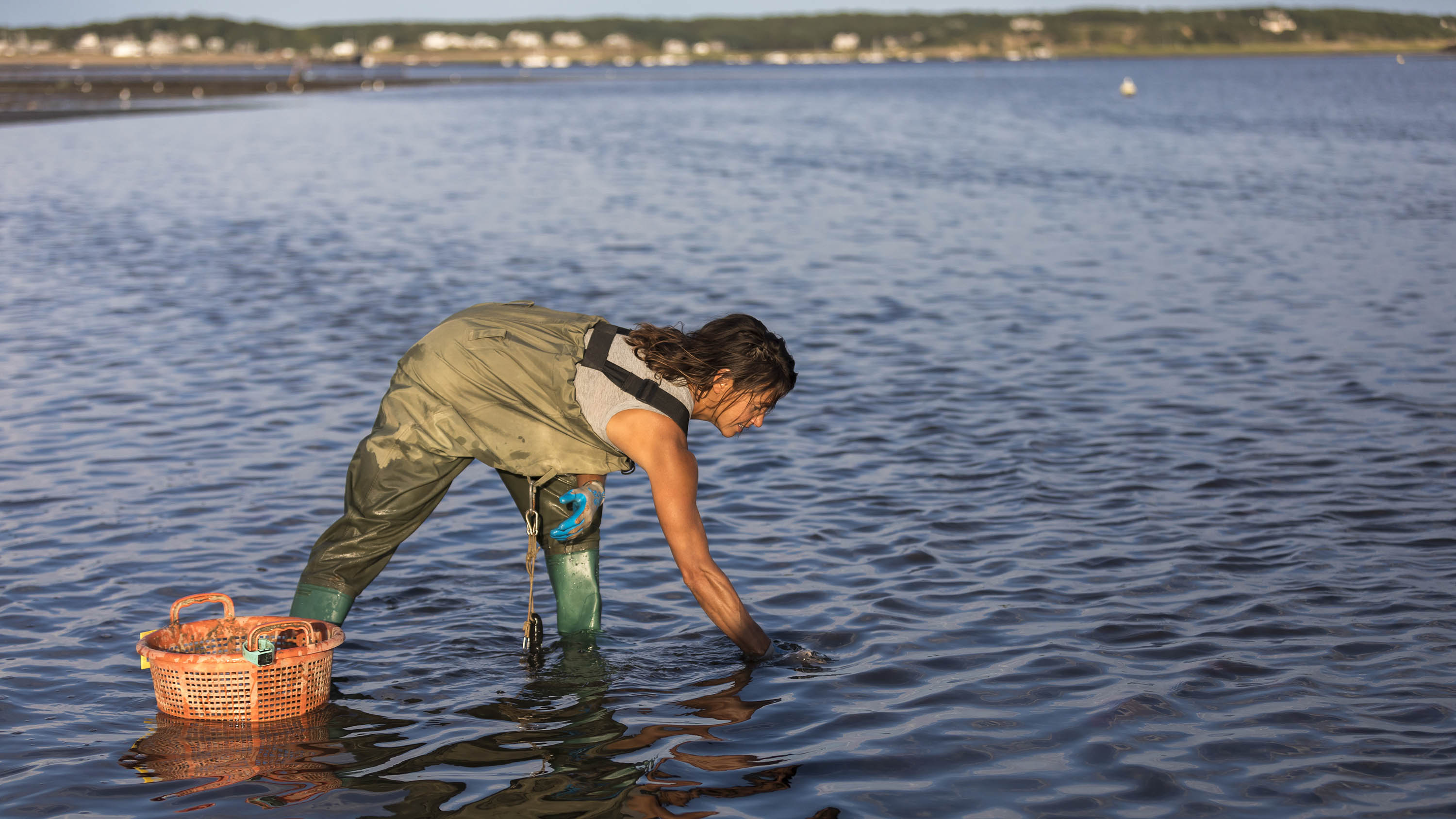 Food with a pinch of salt: The crops we can harvest from the sea
Food with a pinch of salt: The crops we can harvest from the seaFilling, rewarding and nutritious, vegetables and plants grown in saline environments — whether by accident or design — have plenty of potential. Illustration by Alan Baker.
By Deborah Nicholls-Lee
-
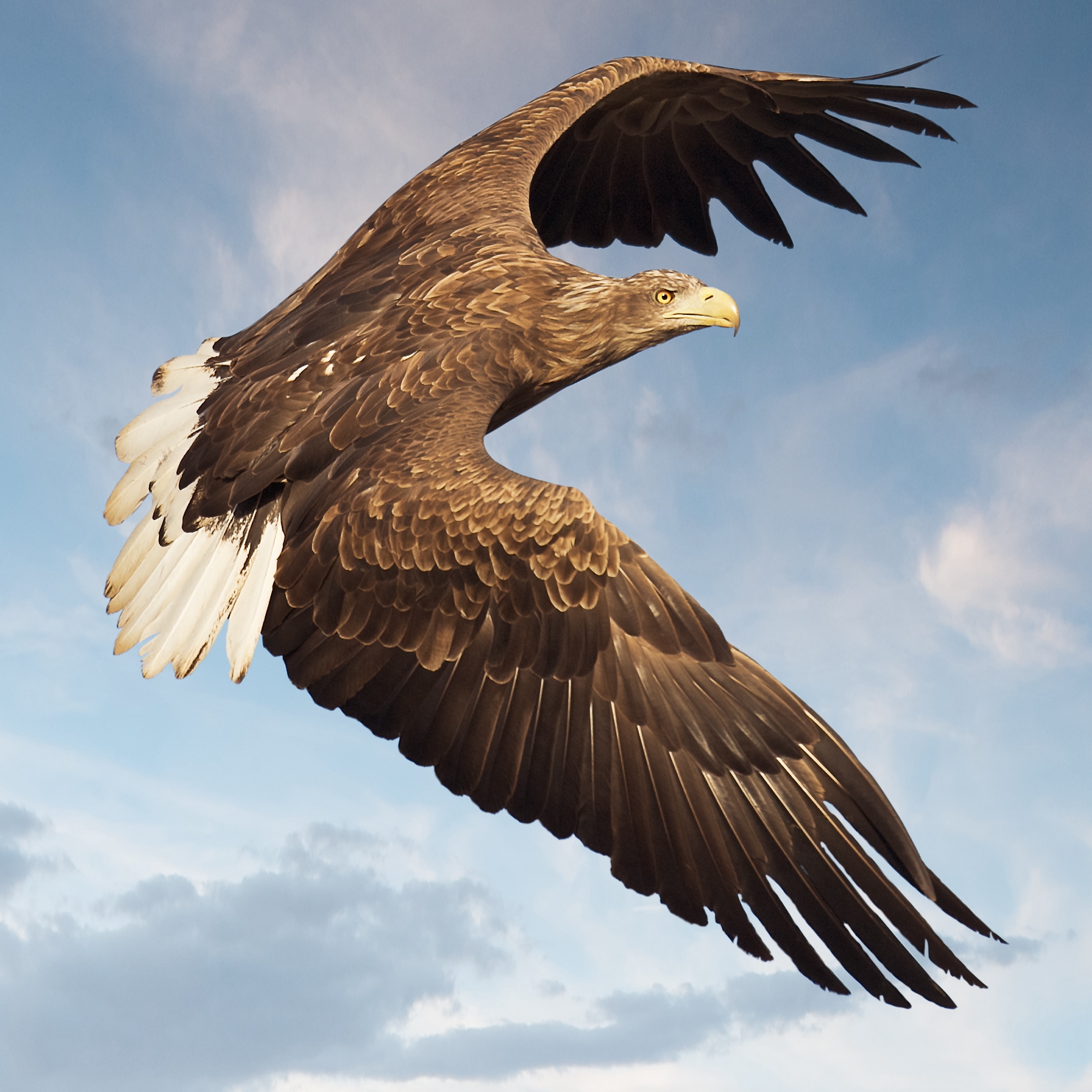 White-tailed eagles could soon soar free in southern England
White-tailed eagles could soon soar free in southern EnglandNatural England is considering licensing the release of the raptors in Exmoor National Park — and the threat to pets and livestock is considered to be low.
By Jack Watkins
-
 Britain's whale boom and and the predator that's far scarier than a great white shark, with wildlife cinematographer Dan Abbott
Britain's whale boom and and the predator that's far scarier than a great white shark, with wildlife cinematographer Dan AbbottThe wildlife cinematographer Dan Abbott joins us on the Country Life Podcast.
By Toby Keel
-
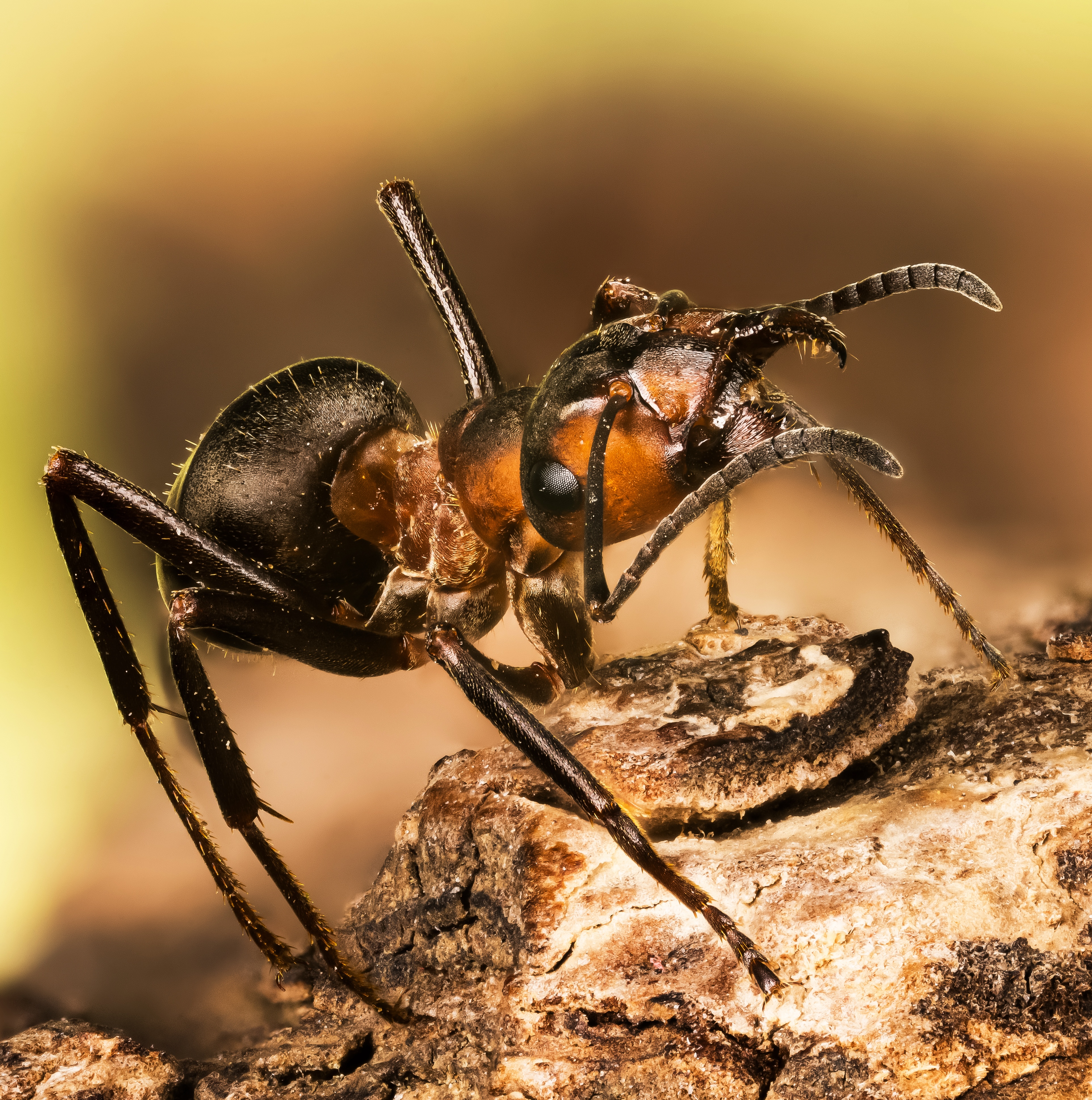 'They are inclined to bite and spray acid to protect territory': Meet the feisty red wood ant
'They are inclined to bite and spray acid to protect territory': Meet the feisty red wood antBy Ian Morton
-
 The King wants YOU: His Majesty's call-to-arms for under-35s across Britain
The King wants YOU: His Majesty's call-to-arms for under-35s across BritainThe King’s Foundation has launched its ‘35 under 35’ initiative — a UK-wide search for ‘the next generation of exceptional makers and changemakers’ who want to work holistically with Nature.
By Amie Elizabeth White
-
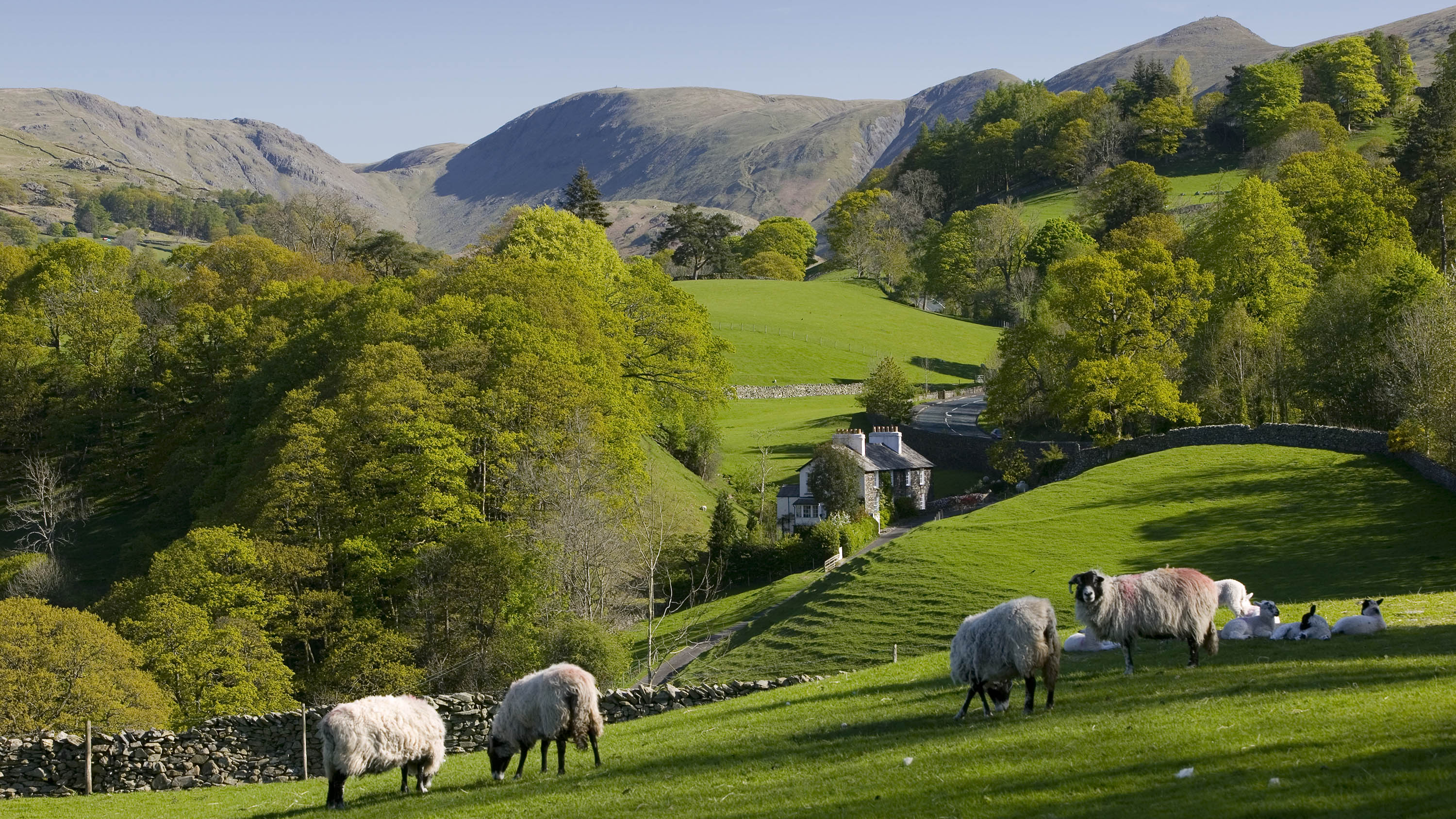 'A big opportunity for a small, crowded and beautiful country': Fiona Reynolds on how the Land Use Framework can make Britain better
'A big opportunity for a small, crowded and beautiful country': Fiona Reynolds on how the Land Use Framework can make Britain betterThe Government’s Land Use Framework should be viewed as an opportunity to be smarter with our land, but conflicts need to be resolved along the way says Fiona Reynolds, chair of the Food, Farming and Countryside Commission.
By Fiona Reynolds
-
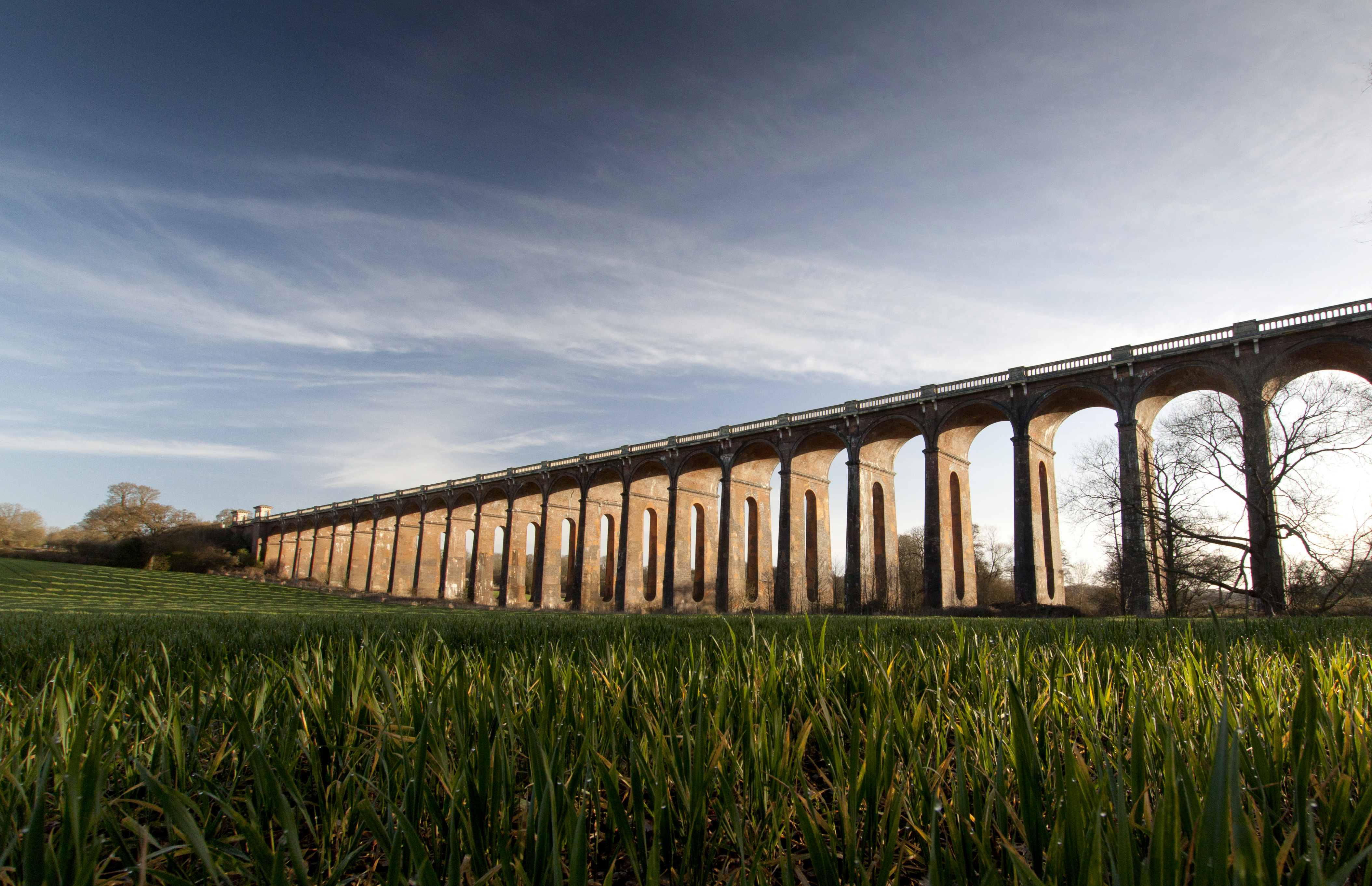 Dawn Chorus: A river comes to life, more mews is good mews, and the new 400-mile electric Volvo
Dawn Chorus: A river comes to life, more mews is good mews, and the new 400-mile electric VolvoRivers now have the legal right to flow, and to not be full of pollution. It's about time.
By James Fisher